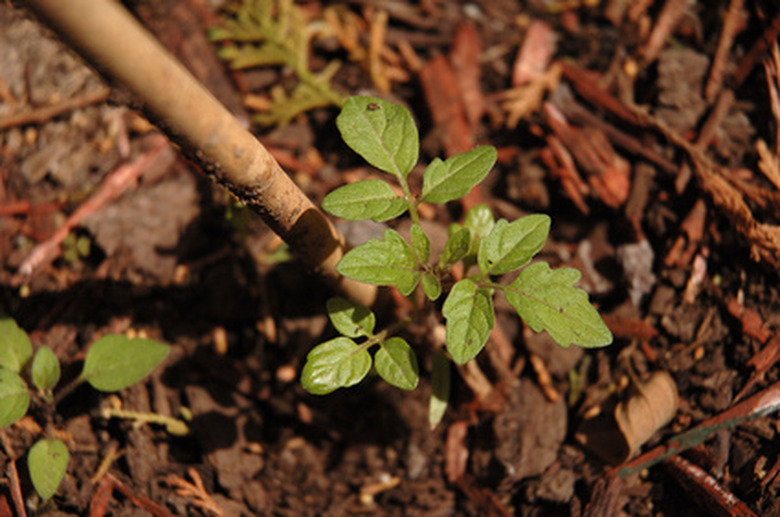Phosphate Deficiency In Tomato Plants
Tomato plants are susceptible to an array of pests, diseases and nutrient deficiencies. One of the most common nutrient deficiencies in tomato plants is phosphate deficiency. Phosphate deficiency is either chronic, in which a limited supply of phosphorus is available, or acute, when phosphorus is suddenly no longer available. Prevention of phosphate deficiency is preferable, and easier, than correction of phosphate deficiency.
What Is Phosphorus?
Phosphorus is a mineral found in soil, water, ocean sediment and rocks. It is an essential nutrient for both plants and animals. Phosphorus is the "P" in the N-P-K (nitrogen, phosphorus, potassium) formula used in fertilizers. Combined with oxygen (O2), phosphorus forms phosphate.
- Tomato plants are susceptible to an array of pests, diseases and nutrient deficiencies.
- Phosphorus is the "P" in the N-P-K (nitrogen, phosphorus, potassium) formula used in fertilizers.
Why Tomato Plants Need Phosphates
Phosphates are essential for tomato growth and the formation of flowers and fruit. Phosphorus helps build cell membranes and store energy. It is also one of the molecules found in DNA. Without phosphate, tomatoes cannot increase in size or produce fruit.
Identifying a Deficiency
Phosphate deficiency in tomatoes is easy to spot. Early in the season when tomato plants are young, their growth becomes stunted or spindly. Later in the growing season, tomato plants will drop flowers and unripe fruit or will not form flowers at all. Ripened tomatoes on mature plants will be small and bitter. The veins on the underside of the leaves take on a purplish tint in all stages of tomato plant growth. In severe deficiencies, the leaves and stems as well as the veins have a purplish tint.
- Phosphates are essential for tomato growth and the formation of flowers and fruit.
- Early in the season when tomato plants are young, their growth becomes stunted or spindly.
Correcting a Deficiency
Adding a balanced commercial or organic fertilizer to the root zone will correct phosphate deficiencies. Balanced fertilizers have equal amounts of nitrogen, phosphorus and potassium. A 10-10-10 or 12-12-12 fertilizer is a balanced fertilizer. For severe deficiencies, add phosphorus (found in bone meal) directly to the soil according to package directions. Tomato plant roots cannot absorb phosphates if the soil is too cold (below 55 degrees F). Apply a plastic or organic mulch to warm the soil.
Prevention
It's easier to prevent phosphate deficiency than to correct phosphate deficiency. Test your soil (your local university or extension agency can do this for you) every two to three years. Add 3 to 4 inches of compost to the soil before planting tomatoes. Apply balanced organic or commercial fertilizers during the growing season. Use plastic or organic mulches to warm soil temperatures in spring.
- Adding a balanced commercial or organic fertilizer to the root zone will correct phosphate deficiencies.
References
- The Garden Primer; Barbara Damrosch; 1988
